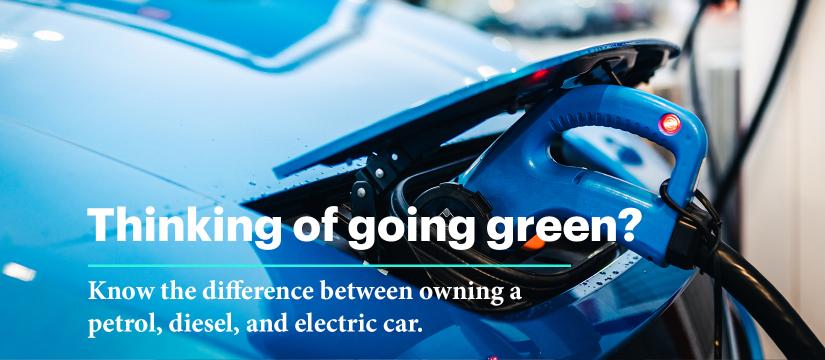
Thinking of going green with an electric vehicle?
The infamous Tesla plug-in vehicles were launched in Australia in 2014. Now, seven years later, Electric Vehicles (EV) are gaining traction as more motorists opt to do their bit by going green on our roads.
If you’re an environmentally friendly person and you’ve thought about buying a plug-in vehicle, we’ve listed some of the differences between owning a petrol, diesel, and electric car to help you consider making the switch.
Petrol VS Hybrid VS Electric
In the past, petrol was the only option. But as technology advances engineers are making breakthrough designs, all while helping the environment – and it seems motorists are keen to go for the drive. According to the Bureau of Infrastructure and Transport Research Economics (BITRE) Electric Vehicle Uptake: Modelling a Global Phenomenon report, electric cars would account for around half of all new cars sold in Australia by 2035.
When it comes to choosing a car, it seems Australians don’t fall short of choices. Below is a breakdown of the advantages and disadvantages of hybrid, electric and petrol cars.
PETROL
Without a doubt, petrol cars are the most popular on the market – this is almost certainly because they’ve been around the longest in comparison to other engine types. The biggest downfalls for petrol cars are that they’re harmful to the environment and they’re not energy efficient. On the other hand, when it comes to speed, these cars can perform.
HYBRID
Hybrid vehicles combine fuel with electric, making them more environmentally friendly. Because of this they have lower emissions compared to petrol cars and tend to get you further in kilometres, possibly saving you money at the petrol pump. But keep in mind hybrid cars are smaller and more lightweight, so they don’t tend to handle as well as regular petrol cars do. They’re also more costly to buy and maintain than regular petrol cars, and because they’re built to be more efficient and economical, they’re not as fast.
ELECTRIC
With no need for petrol, electric cars top the list as the most eco-friendly, efficient vehicles on the road. The average petrol vehicle clocks up 13,400 kilometres annually and uses 10.8 litres of fuel for every 100 kilometres travelled, according to the Australian Bureau of Statistics. However, the average cost of electricity in Australia is $0.30c per kilowatt, meaning an EV uses around 18 kilowatt hours to travel 100 kilometres. Although EVs can cost more to buy than petrol cars, they have lower running costs, which can ultimately save you money in the long run.
Incentives of going green
If you do choose to go green, you’re not only doing your bit to lend a helping hand to the environment, but there are also federal incentives to help you save on cash. For example, fuel efficient vehicles in Australia attract a lower Luxury Car Tax, which will save an electric car buyer up to $2,648. The Luxury Car Tax is levied at 33c on each dollar above a certain threshold. For the 2020/21 financial year, the thresholds are $77,565 for fuel-efficient vehicles, and $68,740 for all other vehicles.
Protect your wheels
No matter what your car is – electric, petrol or diesel – it’s important to protect your asset. With NRMA Comprehensive Car Insurance you can ensure you protect your vehicle from things like accidental damage, theft, severe weather, and much more.
Now that you know more about the differences between petrol, diesel, and electric cars, you can decide whether it’s time to go green and add an EV to your garage.
This content is intended to be general in nature and is not financial or professional advice. We recommend you obtain independent professional advice relevant to your circumstances, before making any financial or commercial decisions.



